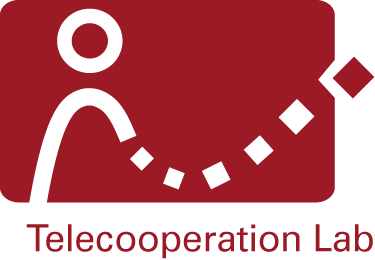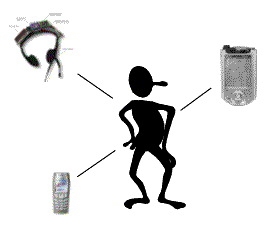
Today all different kinds of mobile devices (i.e. cell-phones, PDAs, smart headsets) are at a person's disposal. Nearly all these devices come with some short range wireless communication capabilities (i.e. Bluetooth, 802.11 WiFi). Figure 1 illustrates this.
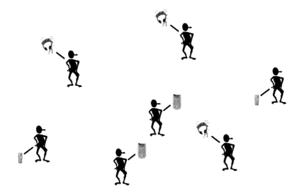
If we now consider a group of anonymous people ad depict in Figure 2, this group may share a common goal or have a related motivation. The question arises, how to share information or resources that are arbitrarily distributed among individuals?
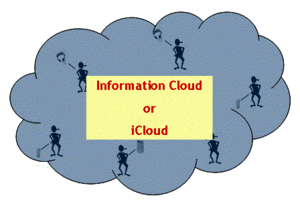
Taking the group of people together as a resource for information, the group forms a information cloud. The project name iClouds derives from this metaphor (cf. Figure 3).
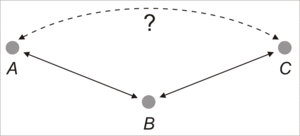
The fact that iClouds forms a network between anonymous individuals has an important impact on routing. Consider the situation in Figure 4 with A, B, and C as mobile nodes, in other words, individuals equipped with mobile devices. A is in communication range of B but not in range of C, who, on the other hand, is in communication range of B. If A wants to communicate with C, all traffic has to be routed via B. Bearing in mind that A, B, and C, a priori, do not know each other, two questions arise:
- What is the incentive for node B to route messages between A and C? Why should node B be willing to donate part of his battery power to enable communication between A and C?
- Why should node A and C trust and rely on node B for their communication? Node B could easily eavesdrop, manipulate, or just reject messages.
What is missing are incentives for users to forward messages and extra security mechanism. Thus, iClouds proposes a wireless one-hop communication scheme where only directly connected nodes exchange messages. Directly connected nodes have a greater incentive to take part in the network, since they are able to satisfy own information wishes. In addition, an incentive scheme that takes user privacy into account may be deployed on top of the basic iClouds communication mechanism (see [link to iClouds-adPASS]).
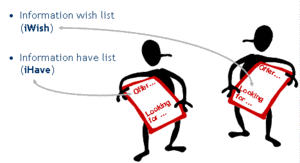
Our approach combines ideas behind Peer-to-Peer networks, i.e., users willing to contribute and consume with ideas behing pub/sub systems. We use one-hop communication to share information within a localized group . This information is augmented with constrains to control propagation. For this, iClouds introduces two basic data structures (depict in Figure 5). The iHave-list holds information a user wants to offer and the iWish-list specifies information a user is looking for.
These data structures build the foundation for our information dissemination protocol. For details, see our publication list.
To summarize, the iClouds project features
- spontaneous one-hop network of humans
- local communication in user's vicinity
- spontaneous face-to-face meeting possible
- no infrastructure needed
- digital items to share
- by interest or
- using incentives
- i.e., with or without financial interests
- no a-priori need for user's attention
- supports for small worlds: “a friend of a friend is a friend”
For more information, visit the project web site at iclouds.tk.informatik.tu-darmstadt.de
People
Scientific Advisor
- Prof. Dr. Max Mühlhäuser
Former Project Member
- Prof. Dr. Andreas Heinemann
Contact
If you are interested in our work, don't hesitate to contact us.


